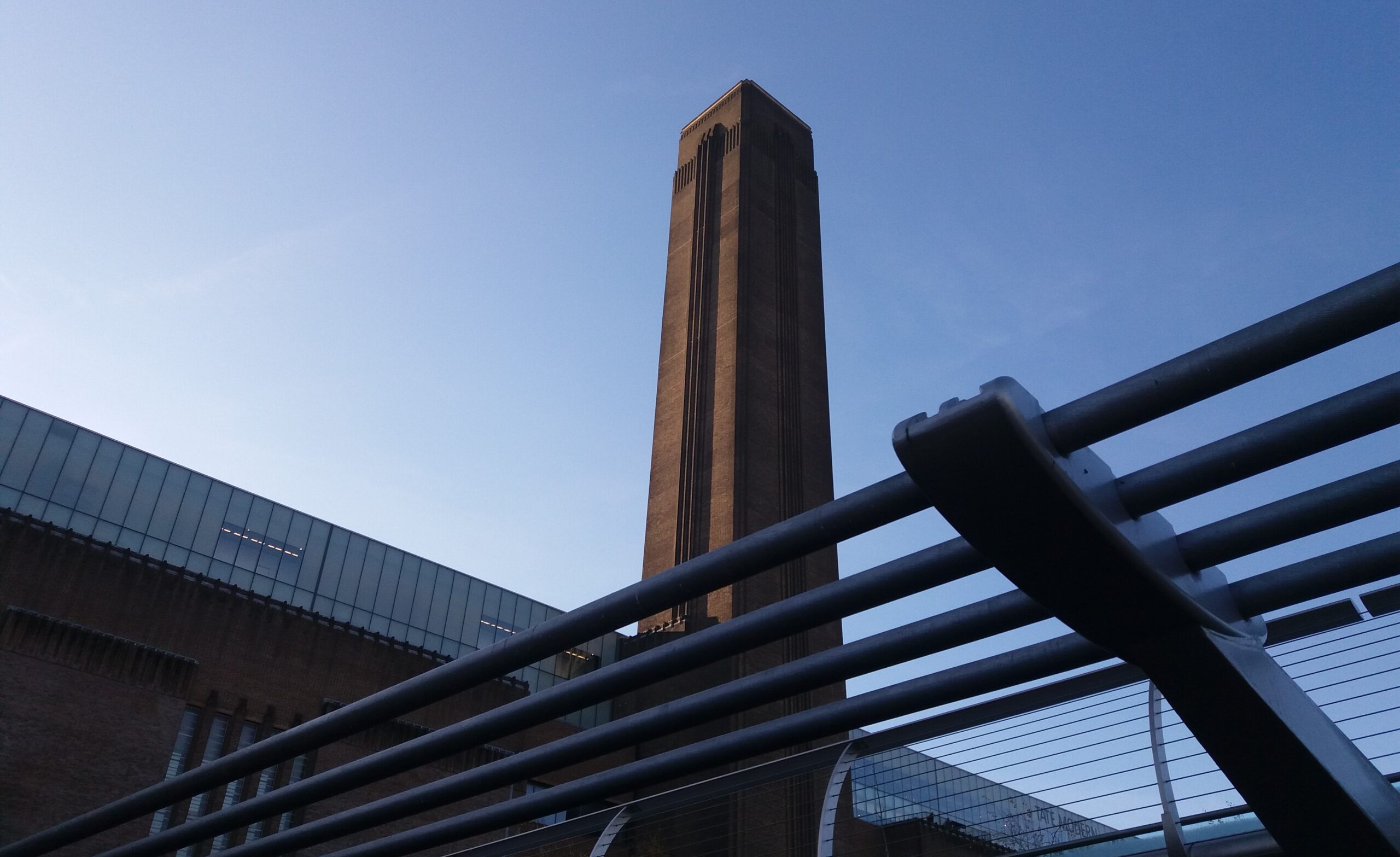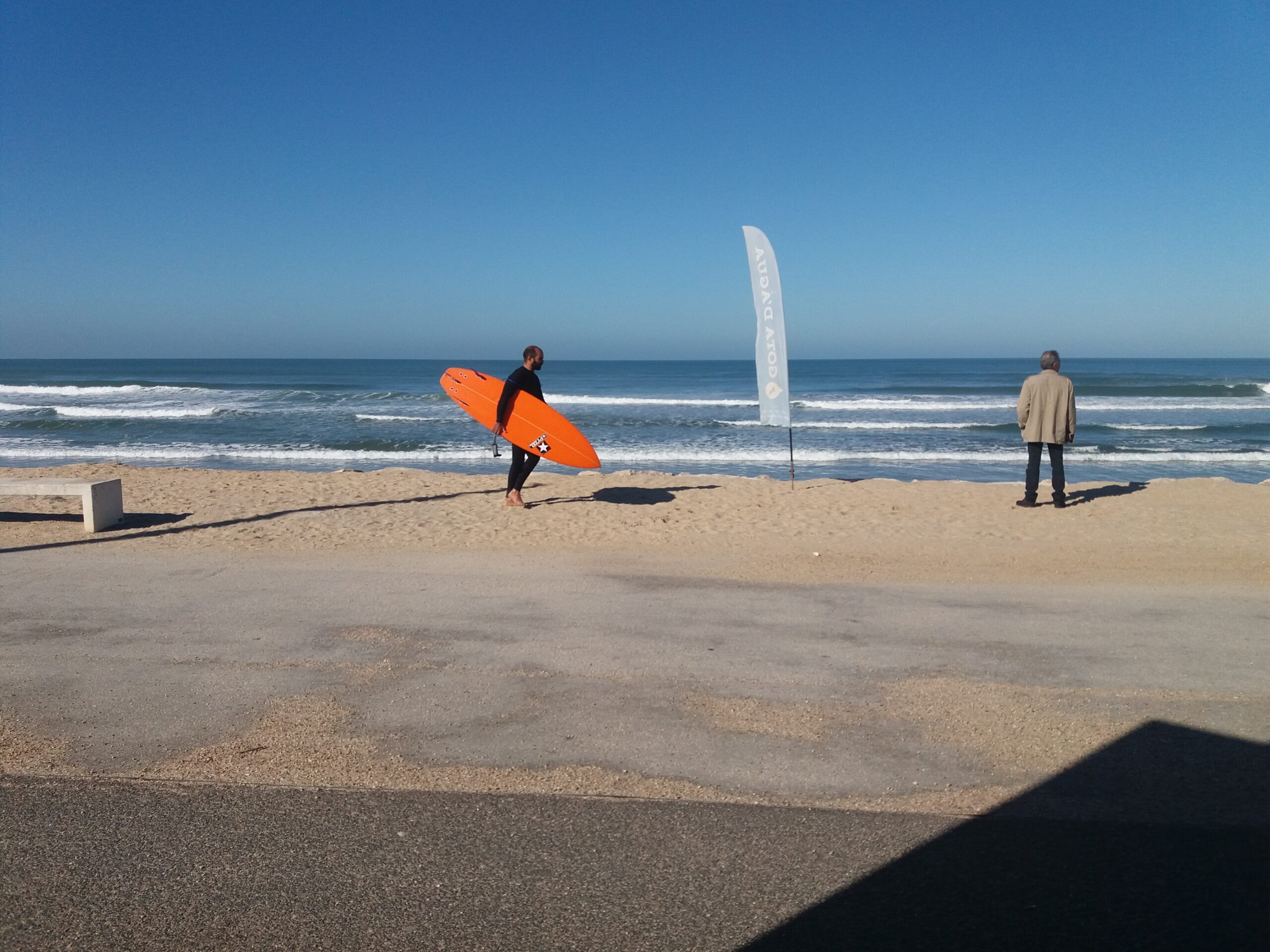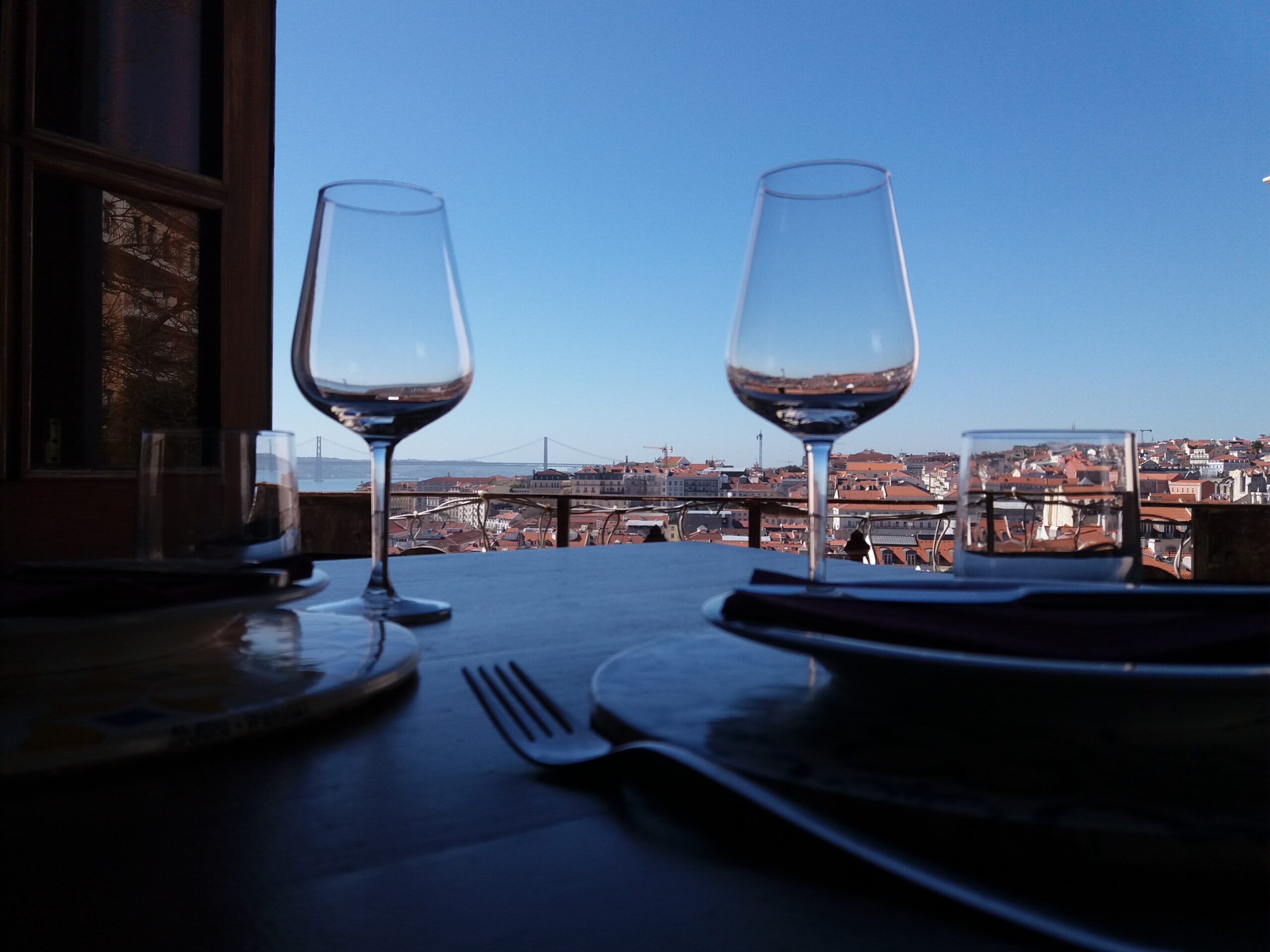In the southwest corner of England, sticking out into the Atlantic Ocean, is the county of Cornwall. Aside from a border with Devon, this is an area that is otherwise completely surrounded by water and home to some of the best beaches in Britain. It’s also full of ancient historical sites, picturesque villages and places of cultural interest like the magical Minack Theatre and atmospheric abandoned mines. Needless to say, Cornwall is firmly on the tourist map.
.
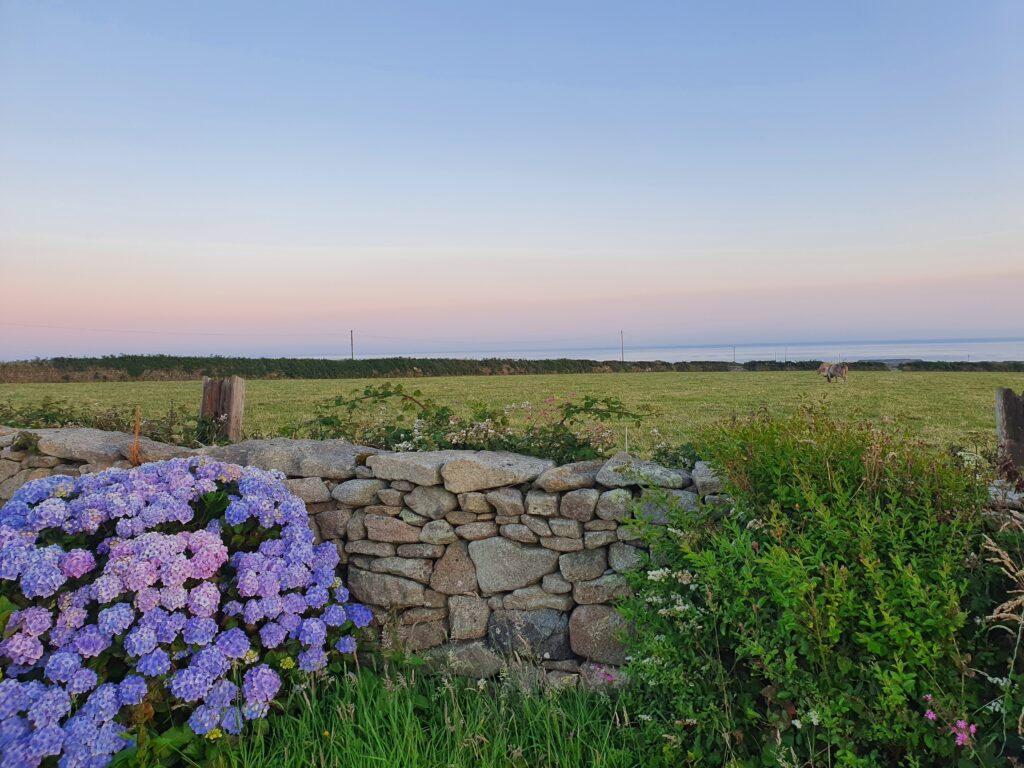
I wanted to visit Cornwall in Summer but, hoping to escape the tourist masses, I made sure to plan my trip outside of the English school holidays. This choice meant that I was able to enjoy some of the area’s most popular spots with plenty of sunshine but without the crowds. The sheer amount of things to do here was rather overwhelming and that’s why I mainly focused on West Cornwall this time round. This part of the world stole my heart and I’m excited to share some of my journey. Here are my highlights of Cornwall.
.
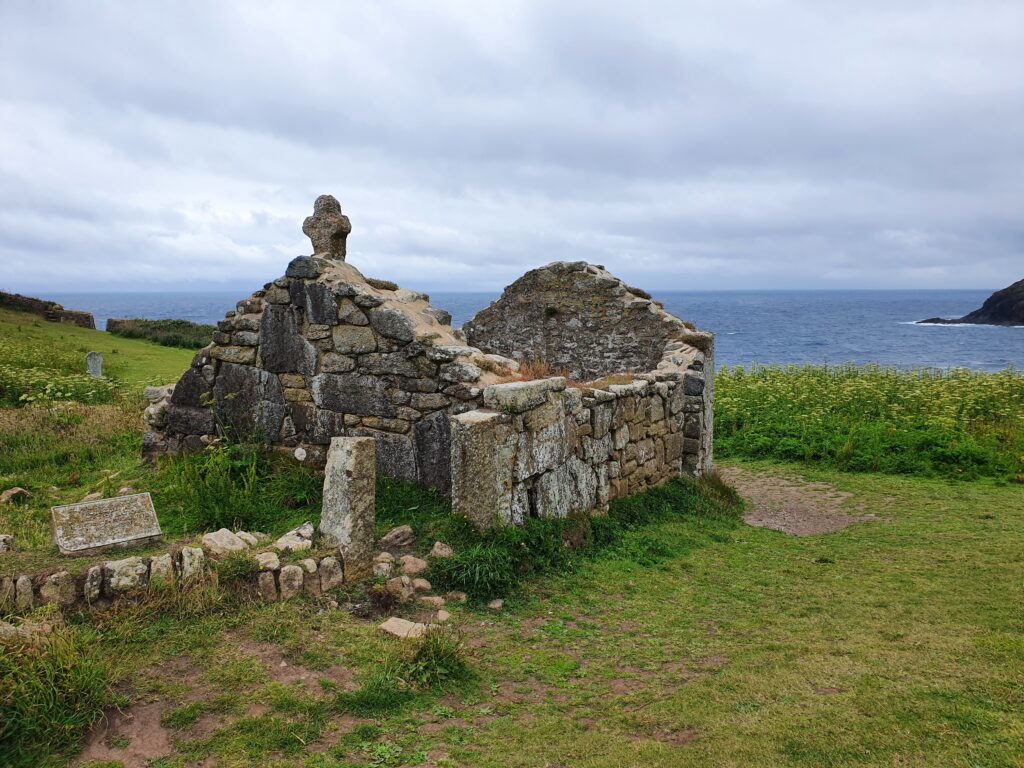
St. Helen’s Oratory
Located at the foot of the headland that marks the most westerly point of the county (Cape Cornwall), the tiny St. Helen’s Oratory is a stunning setting for a religious site. Possibly dating back to Roman times, not much is known about this early Christian chapel, which just adds to its allure. Oratories were typically places of private worship that could be used by the local community and, standing in that field surrounded by ocean, rocks and gusty winds, I could really picture the many people – the brave fishermen, industrious tin miners, worried wives, pious priests and wandering hermits – who would have gone there to pray and reflect on life.
.
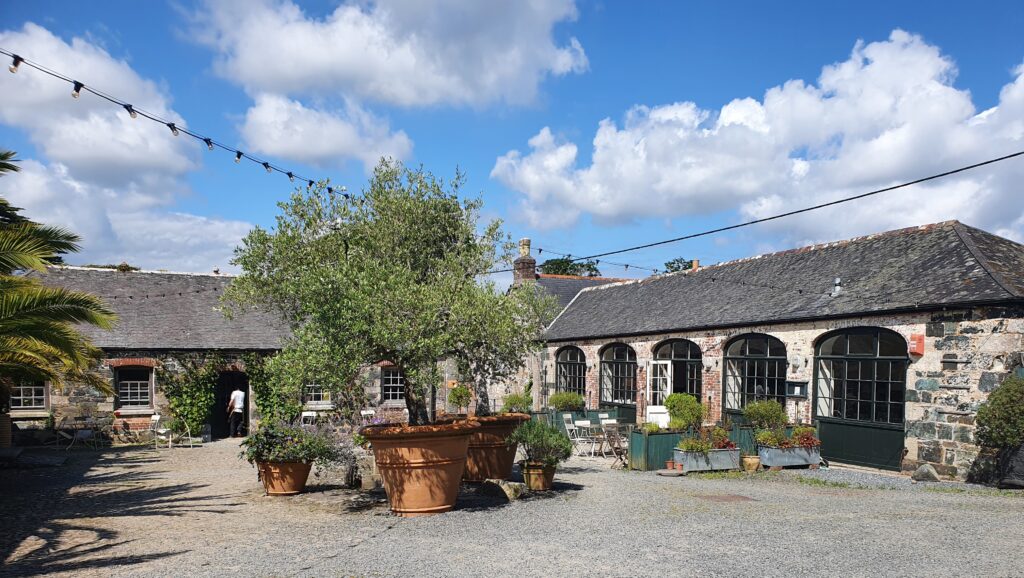
Flora New Yard
On my travels, I always like to treat myself to at least one fancy meal. I found out about the Flora New Yard restaurant while browsing blogs on Cornwall and knew that this was going to be my gastronomic splurge.* The restaurant offers a seasonal set menu for Sunday lunch, with ingredients grown on-site in the garden or sourced from local producers. The impressive menu on the day I visited comprised: a Cornish Gouda cheese straw and gazpacho; burrata, nectarine and sugar snap salad; roast chicken with green beans, new potatoes and a garden salad; summer berry mille-feuille with kefir ice cream; and rhubarb flødeboller. To drink I had a very refreshing Cornish pale ale and the restaurant’s special foraged vermouth as a digestif. I was in foodie heaven!
*At ₤50 pp for four courses, it was actually great value.
.
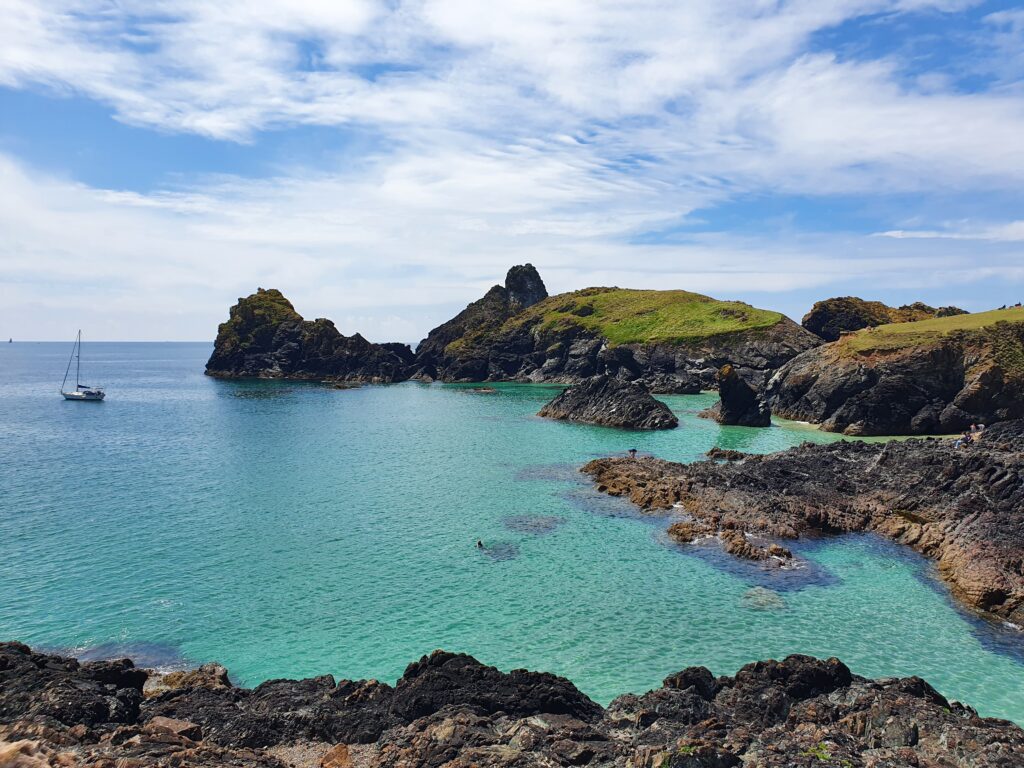
Kynance Cove
The beautiful Kynance Cove, with its turquoise waters, white sands and café serving tasty local beers and Cornish pasties, is certainly not off the beaten track. Despite the summer crowds, the cove retains its charms and is a great place to spend a few hours or even the whole day. You may be forgiven for looking at the beach and thinking you’ve somehow ended up on some Mediterranean island, but a quick dip in the sea will soon bring you back to reality. As a veritable water baby, I naturally had to go in. A proper swim was out of the question though with a sea temperature of around 15˚C (59˚F). If lying on the beach isn’t your thing, this is also a great place to walk some of the famous South West Coast Path. Amazing views and wildlife spotting guaranteed!
.
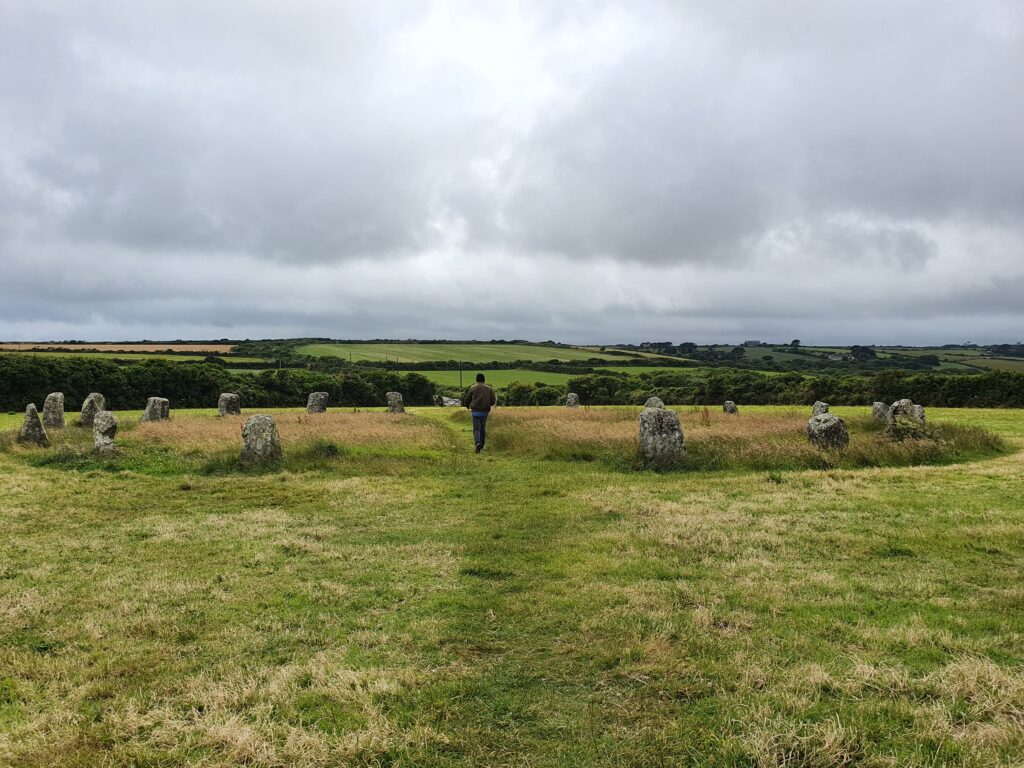
The Merry Maidens Stone Circle
The Cornish landscape holds a wealth of prehistoric sites like early settlements, burial grounds and stone circles that give us a glimpse into its ancient past. Located just off the main road heading south from Penzance, the Merry Maidens site is easily accessible and well worth a visit. These stones at Boleigh were placed here around 4,000 years ago and most probably had some kind of ceremonial function. Legend has it that the nineteen stones were originally nineteen maidens, turned to stone for committing the sin of dancing on a Sunday. In reality, that was just an old wives tale to try and suppress pagan activity. That doesn’t seem to have worked very well though – I found the remnants of a fire and bouquets of wildflowers in the very centre of the circle. Pagan ceremonies are alive and well in Cornwall.
.
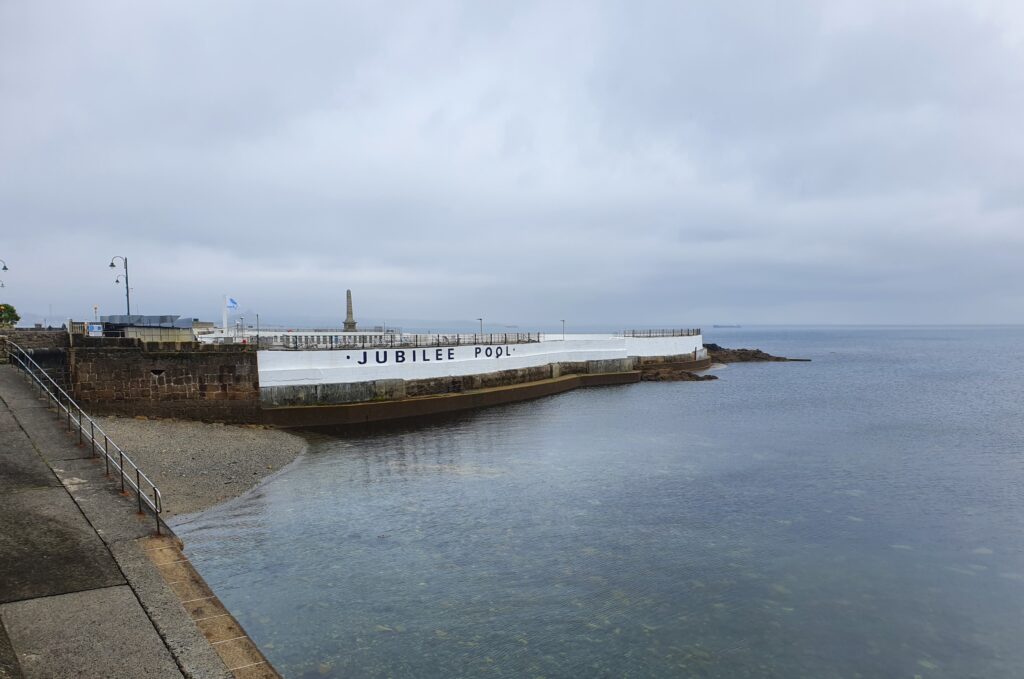
Jubilee Pool
The weather in Cornwall is changeable, to say the least. That’s why, upon waking up on a wet and windy morning at the campsite, I was glad to remember that there was a heated outdoor pool not too far away. The Jubilee Pool in Penzance boasts the UK’s largest seawater lido, holding around 5 million litres of Atlantic water. This main pool is heated by the sun, which makes it a couple of degrees warmer than the open ocean, but it’s still rather chilly. Fortunately, there’s also a smaller geothermal pool that reaches temperatures between 28-30 degrees. By the time I arrived in Penzance the weather had improved a great deal, but it still wasn’t possible for me to do more than just one length of the main pool. Brrr!
.
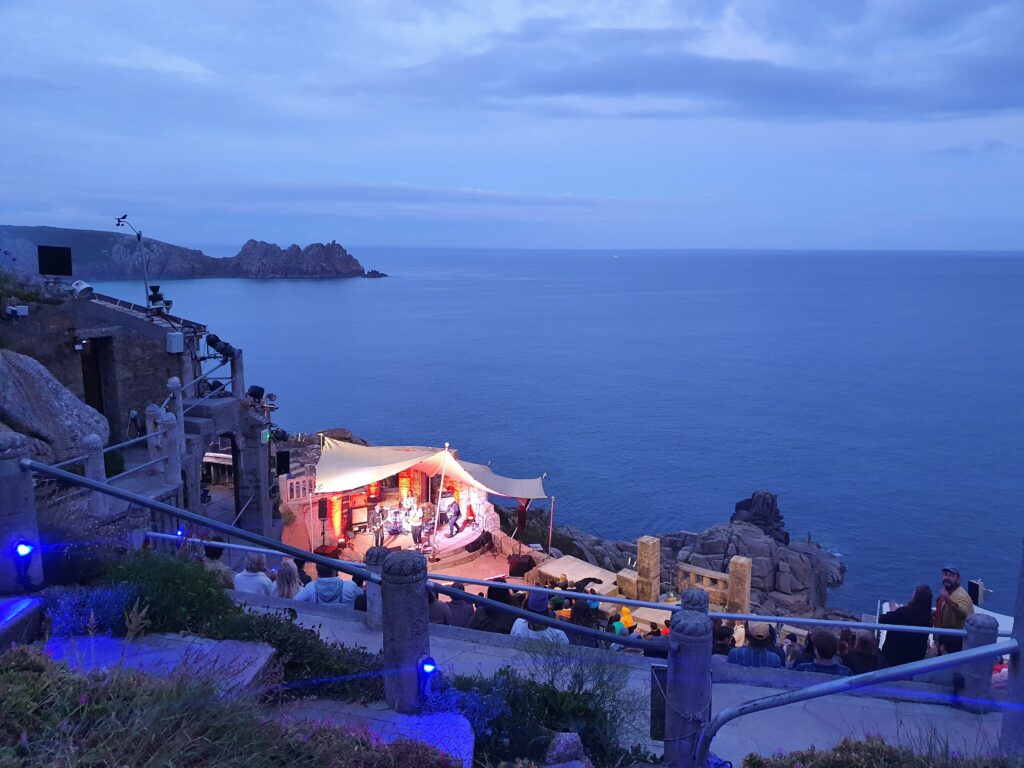
Minack Theatre
This iconic place should be on everyone’s Cornwall itinerary! An outdoor theatre built into the side of a cliff (read more about the history here) and overlooking the gorgeous Porthcurno Bay – the Minack is a sight to behold. But this is more than just an impressive place to look at, it is a place to be experienced. Visitors to the area should try and see a theatre production here or, like me, a live music performance. It was magical to watch the concert while witnessing the gradual change of colours in the sky and sea as evening turned to night. At one point I even saw a dolphin jump out of the water and wondered whether it knew about the hundreds of people watching. Understandably, this is a popular place so make sure to book your ticket well in advance.
.
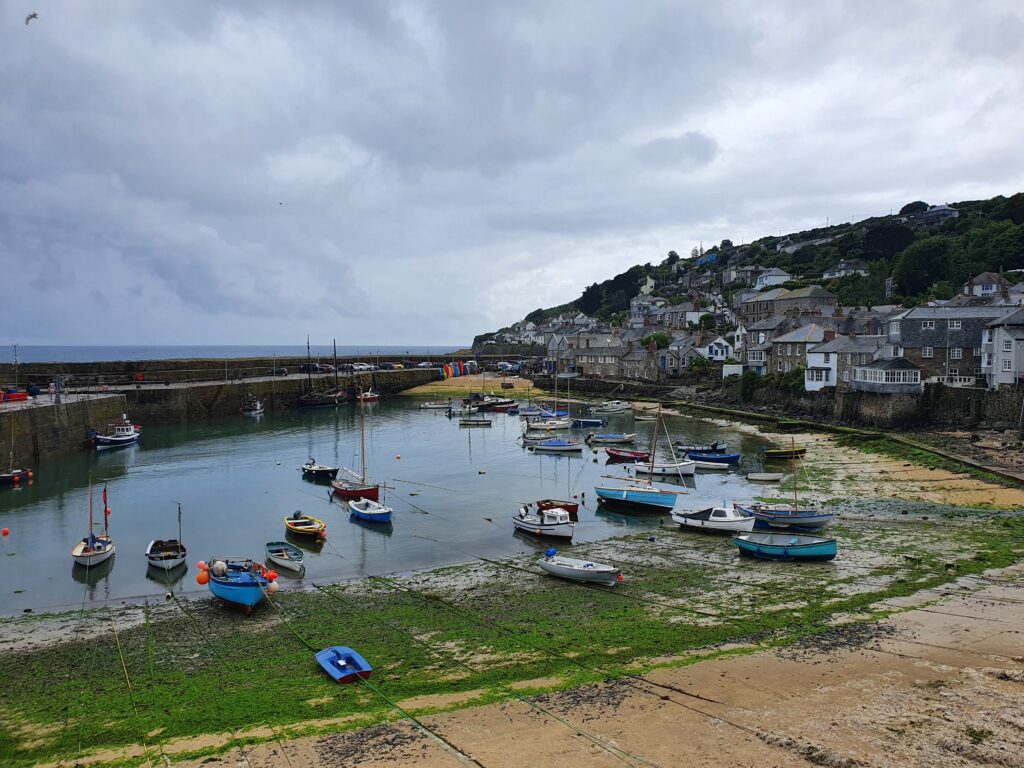
Mousehole
In spite of the lashing rain and cool temperatures ruining my idea of taking a dip in the Mousehole Rock Pool, I was immediately charmed by this quaint Cornish fishing village. Here you can explore the narrow streets lined with independent shops and cafés, have a drink in one of the old pubs, walk around the picturesque harbour and enjoy the beach. While popular with tourists, it seems to have held onto its authenticity and character. As a linguaphile, the highlight for me was seeing a plaque indicating the house of Dolly Pentreath – reportedly the last fluent native speaker of the Cornish language. On the subject of language, make sure not to offend the locals and pronounce the name of the village correctly. It’s Mowsul!
.
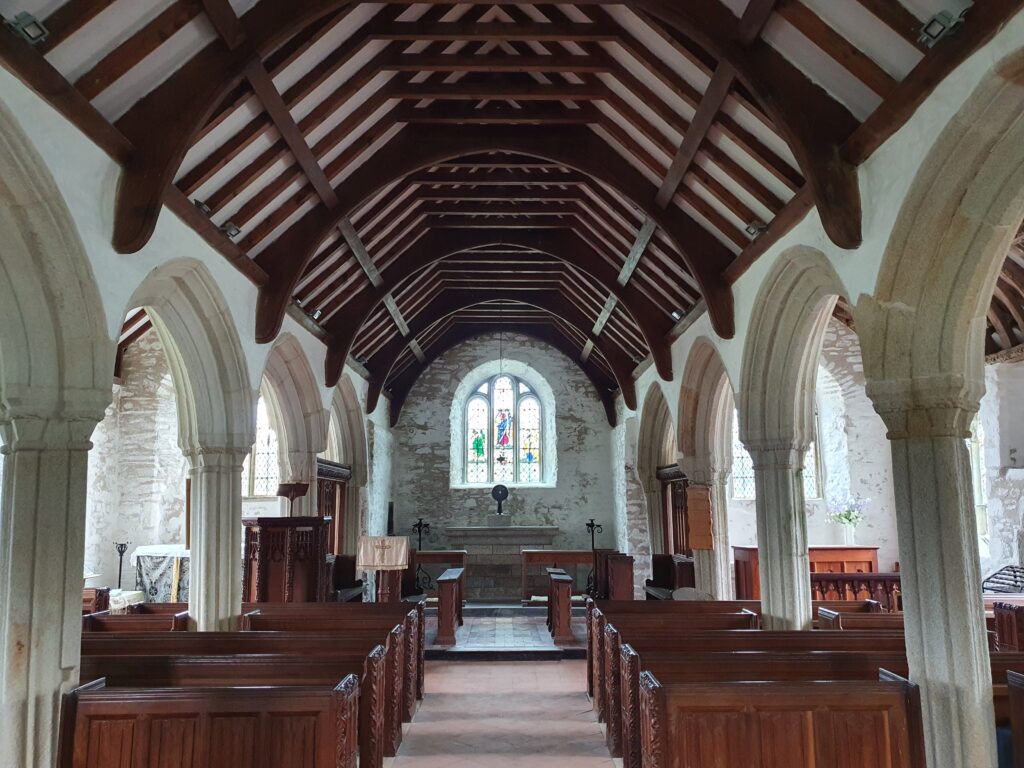
St.Winwaloe’s Church
Said to be one of the oldest churches in Cornwall, the Church of St. Winwaloe must also be one of the most beautifully situated. At the foot of the sand dunes and just steps away from the beach, it’s easy to see why this place of worship has the name ‘the Church of the Storms’. Despite being exposed to the elements in this wild and rugged place, there is a palpable sense of calm at this sacred site. And indeed, while reading the notice board outside the entrance, I found out that the church was built on the site of a small oratory where a Celtic saint spent time alone to be closer to God. Inside, weathered beams reminiscent of an old ship and parts of a 16th century rood screen depicting the apostles are a testament to how long and fascinating a history this place has.
.
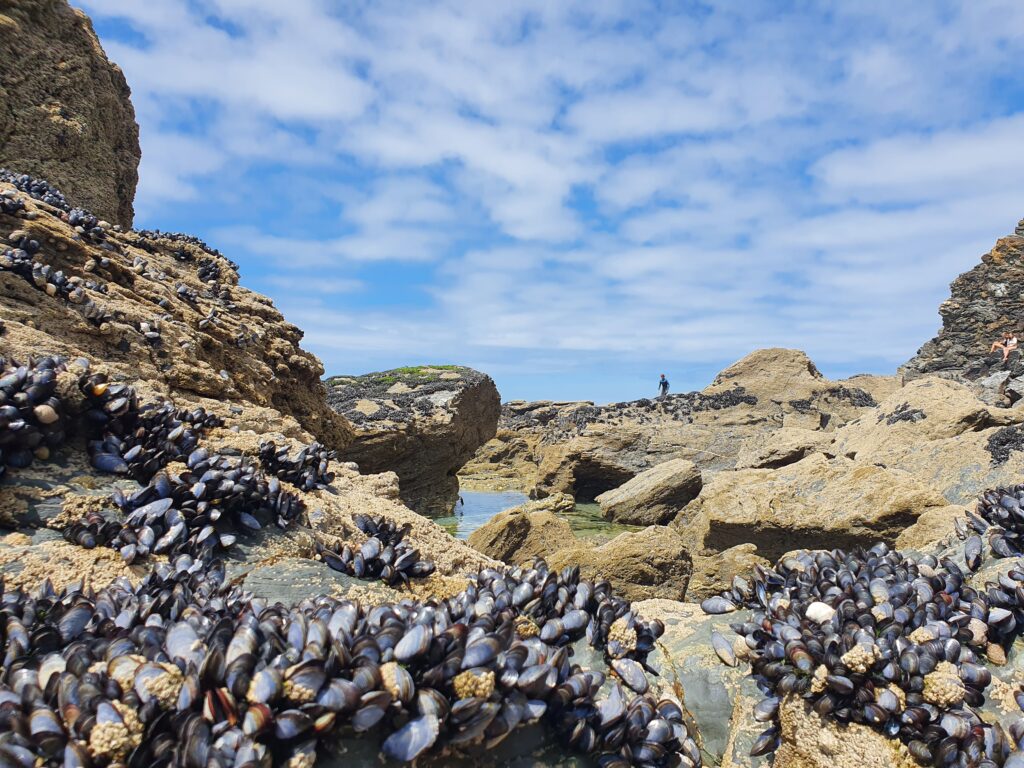
Porthtowan Beach
With its soft sand, consistent waves, lifeguards and bars close to the beach, Porthtowan seems to be popular with just about everyone, from surfers and groups of cider-sipping friends to families. The beach, however, wasn’t my primary motivation to visit Porthtowan. What was? The mermaid pool to the north of it. Filled up at high tide, this 20th century man-made tidal pool is hidden out of sight and accessible only by clambering over lots of rocks. The slightly risky journey to get there meant that it was nice and quiet – the perfect place to splash around in the shallow water and pretend that you’re a mystical sea maiden (or is that just me?) On that note, be sure to check out the Moomaid of Zennor next to the beach café for delicious local ice cream.
.
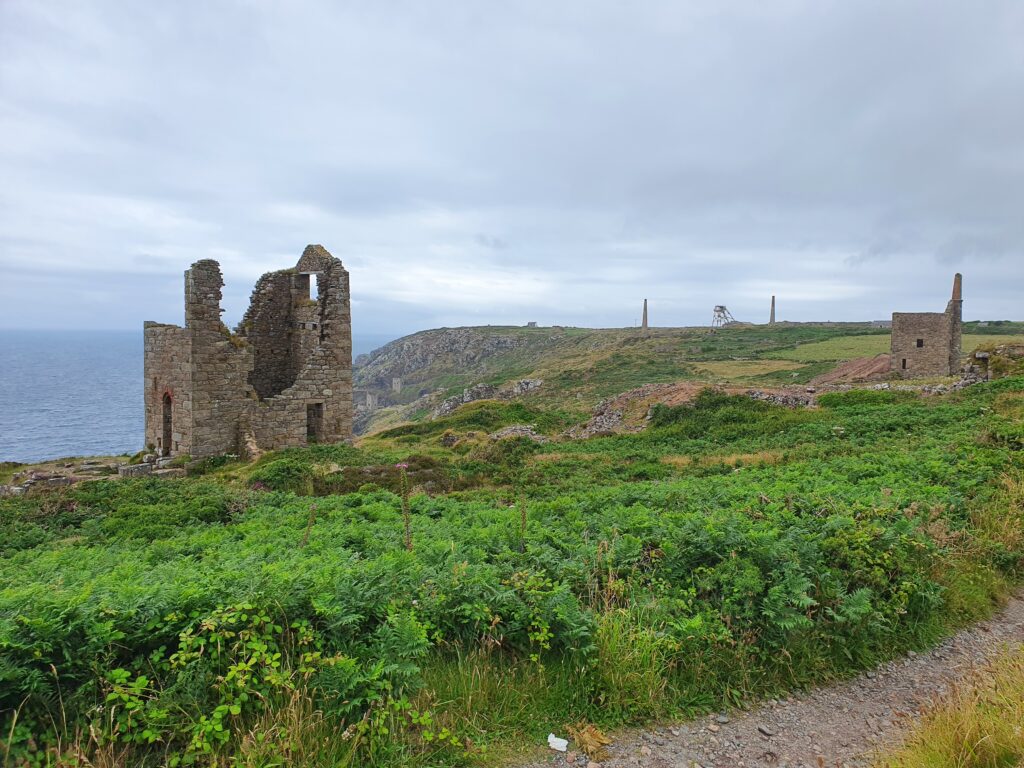
Botallack Mine
Botallack Mine (where parts of TV series Poldark was filmed) is not to be missed if you want to discover more about an essential part of the Cornish culture and identity. My main reason for visiting was the scenery: abandoned engine houses situated on the edge of dramatic cliffs, overlooking the deep blue waters of the Atlantic. Simply breathtaking. However, after going to the visitor’s centre and speaking to a friendly and highly knowledgeable National Trust volunteer, I found myself both intrigued and moved by the stories about the former mine and the miners who risked life and limb to earn a living there. The man I spoke to also told me about the Cornish chough, a rare bird that is making a comeback here after having disappeared for some time. Be prepared to spend a half day here exploring the area and learning about this compelling place!
.
My top tip for a place to stay in Cornwall? Dropped Anchor Campsite near Helston! It’s a small-scale campsite, but the pitches are spacious and have a great sea view. Facilities are modest yet spotlessly clean, and, also thanks to the friendly owner Debbie, you have all you need for a comfortable and enjoyable stay. Being off-grid, this place attracts campers looking to get back to basics and enjoy some peace and quiet. I particularly enjoyed sitting around the campfire in the evening while admiring the sunset colours in the sky and listening to the birdsong. My idea of holiday heaven.
.
For more tips on travelling in England, check out my London blog.

